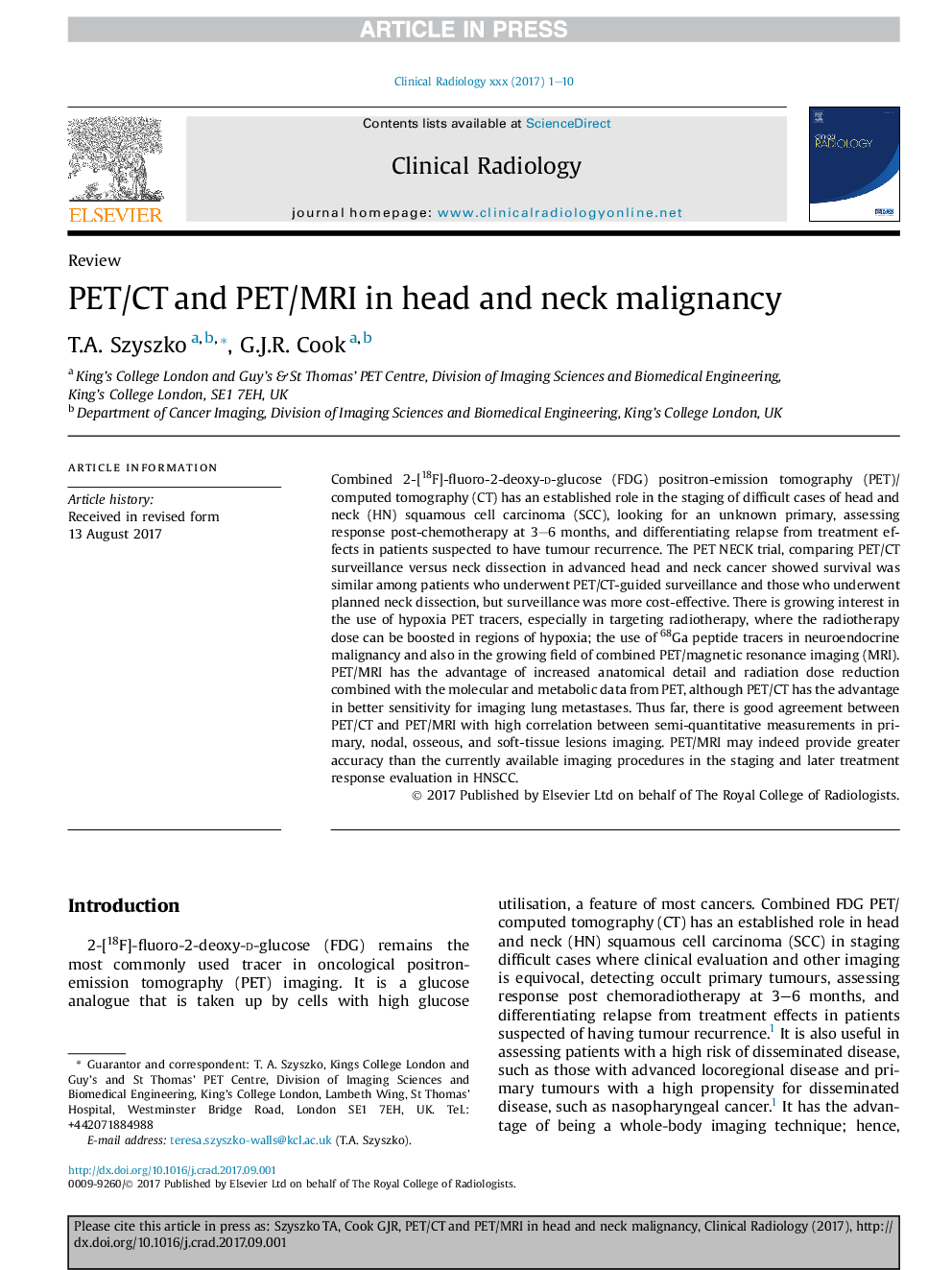| کد مقاله | کد نشریه | سال انتشار | مقاله انگلیسی | نسخه تمام متن |
|---|---|---|---|---|
| 8786600 | 1601148 | 2018 | 10 صفحه PDF | دانلود رایگان |
عنوان انگلیسی مقاله ISI
PET/CT and PET/MRI in head and neck malignancy
دانلود مقاله + سفارش ترجمه
دانلود مقاله ISI انگلیسی
رایگان برای ایرانیان
موضوعات مرتبط
علوم پزشکی و سلامت
پزشکی و دندانپزشکی
تومور شناسی
پیش نمایش صفحه اول مقاله

چکیده انگلیسی
Combined 2-[18F]-fluoro-2-deoxy-d-glucose (FDG) positron-emission tomography (PET)/computed tomography (CT) has an established role in the staging of difficult cases of head and neck (HN) squamous cell carcinoma (SCC), looking for an unknown primary, assessing response post-chemotherapy at 3-6 months, and differentiating relapse from treatment effects in patients suspected to have tumour recurrence. The PET NECK trial, comparing PET/CT surveillance versus neck dissection in advanced head and neck cancer showed survival was similar among patients who underwent PET/CT-guided surveillance and those who underwent planned neck dissection, but surveillance was more cost-effective. There is growing interest in the use of hypoxia PET tracers, especially in targeting radiotherapy, where the radiotherapy dose can be boosted in regions of hypoxia; the use of 68Ga peptide tracers in neuroendocrine malignancy and also in the growing field of combined PET/magnetic resonance imaging (MRI). PET/MRI has the advantage of increased anatomical detail and radiation dose reduction combined with the molecular and metabolic data from PET, although PET/CT has the advantage in better sensitivity for imaging lung metastases. Thus far, there is good agreement between PET/CT and PET/MRI with high correlation between semi-quantitative measurements in primary, nodal, osseous, and soft-tissue lesions imaging. PET/MRI may indeed provide greater accuracy than the currently available imaging procedures in the staging and later treatment response evaluation in HNSCC.
ناشر
Database: Elsevier - ScienceDirect (ساینس دایرکت)
Journal: Clinical Radiology - Volume 73, Issue 1, January 2018, Pages 60-69
Journal: Clinical Radiology - Volume 73, Issue 1, January 2018, Pages 60-69
نویسندگان
T.A. Szyszko, G.J.R. Cook,